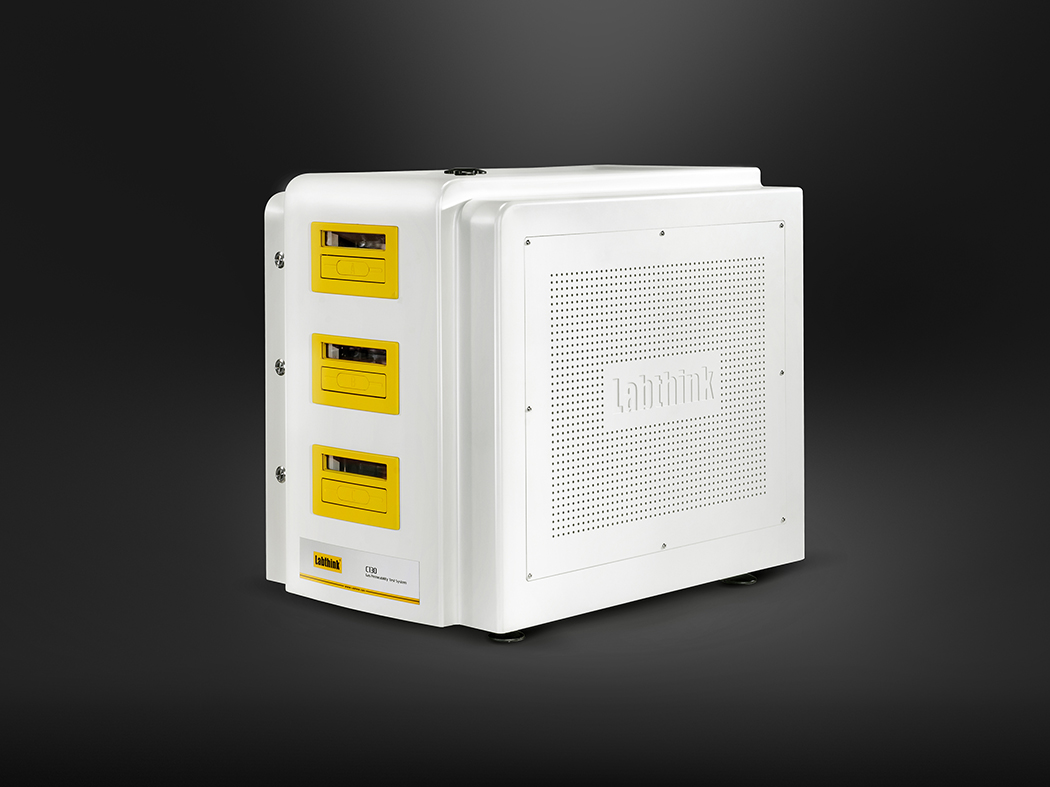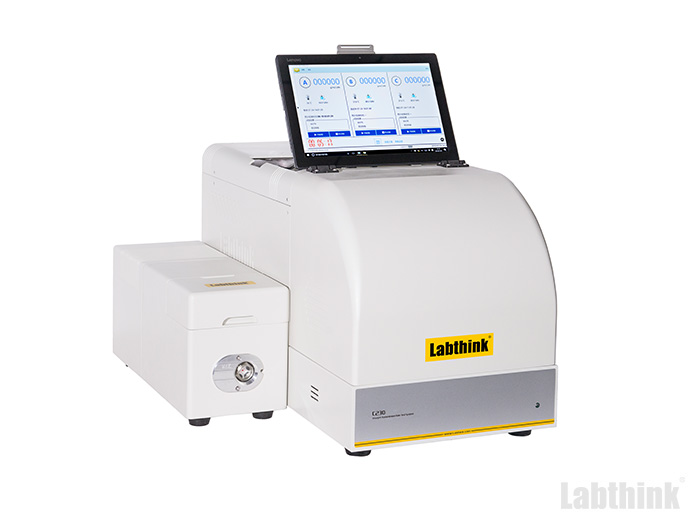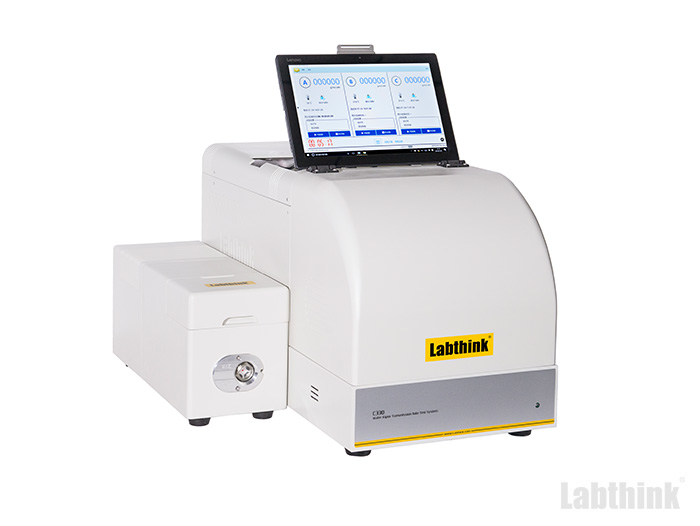There are some slight differences between domestic and international definitions of permeability parameters, which cause confusions in parameter concept and application. The situation will not only affect data transfer but lead to the evaluation failure to the materials. This article focuses on the analysis of the transmission rate of the permeability parametric gas, the permeance and the definition of gas permeability coefficient. The article also introduces the relationship between them and important issues in application.
Chapter One: The Standard Definition Of Gas Permeability Parameter
Because carrier gas (N2) reversely transmits in the equal pressure method, the method is essentially different from the manometry method. The difference may affect method application scope and parameter definition (for example, the equal pressure method is mostly applied to oxygen gas test, but the manometry method has barely had any requirements to test gas). As a result, this article introduces the definitions of various permeability parameters according to the type of testing method.
1.1 Manometric Method
1.1.1 ASTM D1434-82
In ASTM D1434-82, there are three descriptions of permeability parameters:
1. Gas Transmission Rate (GTR): The quantity of a given gas passing through a unit of the parallel surfaces of a plastic film in unit time under the conditions of test. The SI unit of GTR is 1 mol / (m2·s).
2. Permeance (P): The ratio of the gas transmission rate to the difference in partial pressure of the gas on the two sides of the film. The SI unit of permeance is 1 mol / (m2·s·Pa).
3. Permeability (P): The product of the permeance and the thickness of a film. The SI unit of P is 1 mol/(m2·s·Pa).
1.1.2 ISO 2556:2001
There is only one description of permeability parameter in ISO 2556:2001:
Gas transmission rate: The volume of gas which, under steady conditions, crosses unit area of the sample in unit time under unit pressure difference and at constant temperature. The rate is usually expressed in cm3/m2·d·atm.
1.1.3 GB/T 1038-2000
There are two descriptions of permeability parameters in GB/T 1038-2000:
1. permeance (Qg): The volume of gas which, under steady conditions, crosses unit area of the sample in unit time under unit pressure difference and at constant temperature. The rate is usually expressed in cm3/m2·d·Pa.
2. Permeability coefficient (pg): The volume of gas which, under steady conditions, crosses unit area and unit thickness of the sample in unit time under unit pressure difference and at constant temperature. The rate is usually expressed in cm3 ·cm/ m2·s·Pa.
1.1.4 Conclusion
Through the analysis of the standard definition and result unit, in GB/T 1038-2000, ASTM D1434-82 and ISO 2556:2001, the definitions of the gas permeability coefficient are the same; the expressions of the permeance are different, GB/T 1038-2000 ‘permeance (Qg)’= ASTM D1434 ’Permeance (P)’ = ISO 2556 ’Gas transmission rate’,the units could all be transformed to cm3/m2·24h·0.1MPa.
1.2 Equal pressure method
1.2.1 ASTM D3985-05
There are three descriptions of permeability parameters:
1. Oxygen Transmission Rate (O2GTR): The quantity of oxygen gas passing through a unit area of the parallel surfaces of a plastic film per unit time under the conditions of test. The SI unit of transmission rate is the mol/(m2·s).
2. Oxygen Permeance (PO2): The ratio of the O2GTR to the difference between the partial pressure of O2 on the two sides of the film. The SI unit of permeance is the mol/(m2·s·Pa).
3. Oxygen Permeability Coefficient (P’O2): The product of the permeance and the thickness of film. The SI unit of oxygen permeability is the mol/(m2·s·Pa).
1.2.2 ISO 15105-2:2003
There are two descriptions of permeability parameters in ISO 15105-2:2003:
1. Gas-transmission rate (GTR): Volume of gas passing through a plastic material, per unit area and unit time, under unit partial-pressure difference between the two sides of the material. O2GTR is the oxygen-transmission rate, expressed in moles per square metre second pascal [mol/(m2·s·Pa)]. O2GTR is generally expressed in cubic centimetres per square metre 24h [cm3/(m2·24h)].
2. Gas permeability (P): Volume of gas passing through a plastic material of unit thickness, per unit area and unit time, under unit partial-pressure difference between the two sides of the material. P is expressed in mole metres per square metre second pascal [mol·m / m2·s·Pa].
1.2.3 GB/T 19789-2005
There are three descriptions of permeability parameters in GB/T 19789-2005:
1. Oxygen transmission rate (O2GTR): Volume of oxygen passing through a specimen material, per unit area and unit time, under test conditions. O2GTR is generally expressed in cm3/(m2·24h).
2. Oxygen permeance (PO2): The ratio of the O2GTR to the difference between the partial pressure of O2 on the two sides of the film. The unit of permeance is the cm3/(m2·24h·0.1MPa).
3. Oxygen Permeability Coefficient (  ): The product of the permeance and the thickness of film. The unit of oxygen permeability is cm3/(m2·24h·0.1MPa).
): The product of the permeance and the thickness of film. The unit of oxygen permeability is cm3/(m2·24h·0.1MPa).
Note: GB/T 19789-2005 has been modified to adopt ASTM D 3985-1995 Oxygen Gas Transmission Rate Through Plastic Film and Sheeting Using a Coulometric Sensor.
1.2.4 Conclusion
By the analysis of the standard definitions and the result units, for the equal pressure method, the definitions and units of oxygen permeability coefficient are the same in GB/T 19789-2005, ASTM D3985-05 and ISO 15105-2:2003, the only difference is that GB/T 19789-2005 translates it into oxygen permeability coefficient. Besides, the expressions of the gas permeance are different, GB/T 19789-2005 ’oxygen permeance (PO2)’= ASTM D3985-05 ‘Oxygen Permeance (PO2)’= 15105-2:2003 ‘Gas-transmission rate (GTR)’. It is noticeable that ISO 15105-2:2003 can be applied to more than oxygen permeability test, thus, it does not restrain the concept of permeability parameter in the scope of oxygen test.
Chapter Two: The Application Of Permeability Parameters
The gas permeability rate is the volume of the gas which passes through unit area of specimen in a unit time; it is determined by the barrier property of the material and the partial pressure difference between two sides of the specimen. The gas permeability rate is determined by the test conditions and the specimen itself. The permeance is only determined by the specimen itself. As to the gas permeability coefficient, it is determined by the properties of the specimen material itself.
Usually, the permeance (cm3/m2·24h·0.1MPa) and the gas transmission rate are the only things we concern. Besides the influence of the standard definition difference, technically speaking, the gas transmission rate has been barely applied. That is because the rate is usually influenced by the gas partial pressure difference and thus unfavorable to data comparison. Moreover, some misunderstanding to the application of gas transmission rate does exist. The rate could not be applied to every material but to the even single layer material. Before application, tests of materials with varied thickness should be executed and proved to be consistent. To multi-layer materials the test of gas transmission rate is meaningless. The rate serves to design multi-layer material structures.
Chapter Three: Conclusion
Attention should be drawn to the differences in the definitions and units of permeability parameters. As to the users, the meanings of parameters of different standards shall be confirmed by comparing the result units; the parameters’ tag should not be the only thing being concerned in order to avoid confusion in data comparison and communication.



